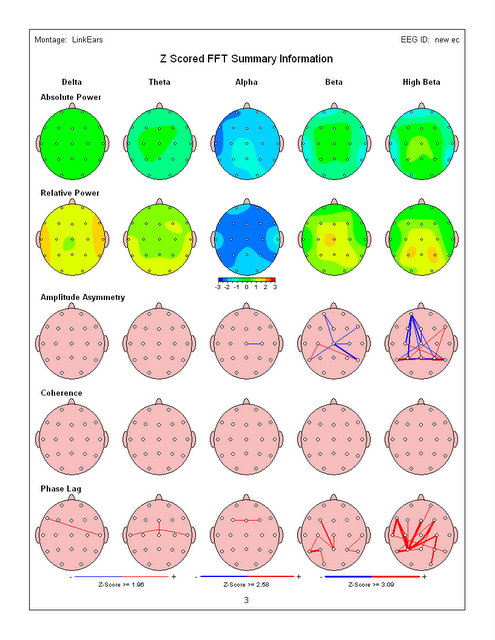QEEG Brain Mapping
QEEG stands for quantitative electroencephalography. Standard EEG readings have been used by neurologists for decades to look for abnormal brainwave patterns found in epilepsy, but it wasn't until representative samples of our population had the EEG recorded at 19 sites, analyzed, and turned into a normative database that the QEEG brain map became possible and useful.
A QEEG brain map involves recording the EEG at 19 sites covering the head during various conditions (eyes open, eyes closed, and task conditions as needed) and comparing the recorded data to our normative database to see how any particular brain is different. This allows us to gain some insight into the nature of the condition underlying the symptoms. For example, a child or adult with symptoms of inattention could have a brain characterized by excess theta waves which is most common, or they may have a less common subtype of increased beta waves. If a person has inattention with increase beta waves I would not want to train them in neurotherapy the same way I would train someone with excess theta waves because it would most likely make them anxious. Thus the brain maps can help us target treatment in a more accurate way that when we rely simply on symptoms to guide the training.
If you would like to read detailed infromation on QEEG I would like to recommend a great summary by a colleague, Dr. John Nash - current president of ISNR (International Society for Neurfeedback and Research). Dr. Nash's QEEG Fact Sheet
Example image of a small slice of the data gained from a brain map

QEEG brain maps are thoroughly interpreted and explained Dr. Jay at the meeting following the completion of the map and any additional assessments performed.
|

